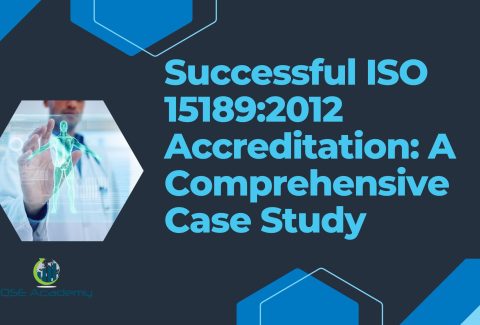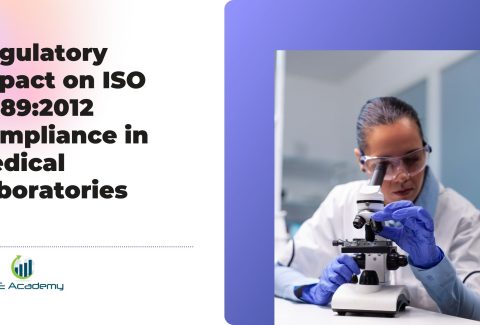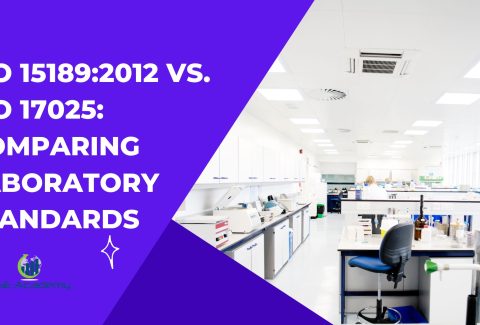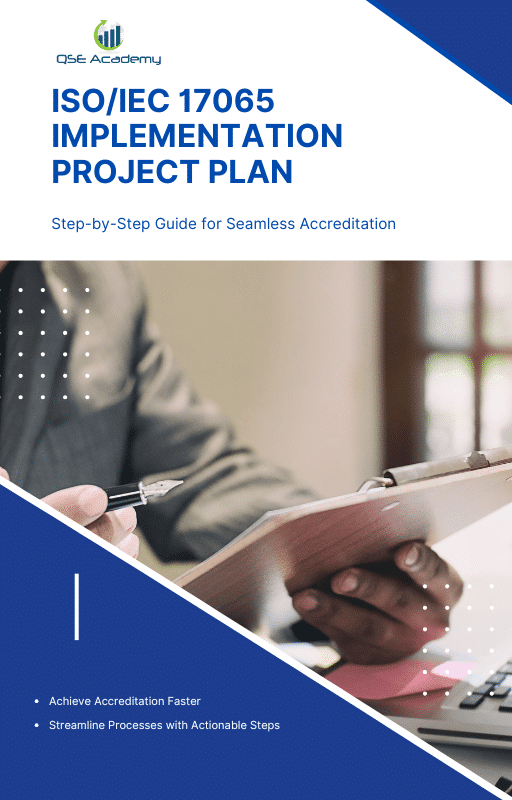Guida completa ai requisiti di documentazione secondo la norma ISO/IEC 17065.
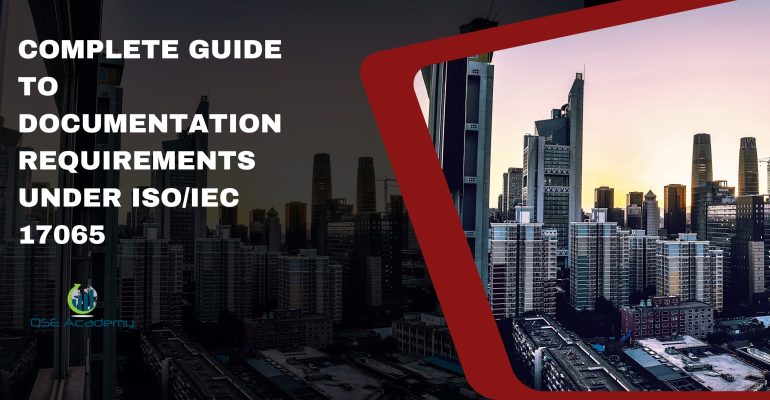
Guida completa ai requisiti di documentazione secondo la norma ISO/IEC 17065
Navigare nella complessità della norma ISO/IEC 17065 può essere scoraggiante come infilare un ago in un pagliaio digitale. Lo standard, fondamentale per gli organismi di valutazione della conformità che certificano prodotti, processi e servizi, richiede rigore e struttura nella documentazione. La comprensione dei requisiti non è solo necessaria per la conformità, ma anche fondamentale per raggiungere l'eccellenza operativa.
Questo articolo funge da bussola per guidarvi attraverso le complessità della documentazione ISO/IEC 17065. Dalle aspettative generali alle sfumature delle registrazioni del sistema di gestione, questa guida completa illumina il percorso verso pratiche di documentazione efficaci. Esplorate i fondamenti della norma ISO/IEC 17065, approfondite le migliori pratiche per la manutenzione della documentazione e imparate attraverso scenari reali. Benvenuti nel vostro viaggio verso la padronanza dell'arte della documentazione ISO/IEC 17065.
Introduzione
La norma ISO/IEC 17065, intitolata "Requisiti per gli organismi che certificano prodotti, processi e servizi", stabilisce i criteri per le organizzazioni che effettuano la certificazione dei prodotti. Tali certificazioni indicano che i prodotti sono conformi a standard specifici, assicurando così ai clienti e alle parti interessate la loro qualità e sicurezza.
La documentazione della norma ISO/IEC 17065 svolge un ruolo fondamentale nel delineare la struttura e le operazioni di un organismo di certificazione (CB). Serve come schema per il processo di certificazione, garantendo trasparenza, coerenza e conformità agli standard internazionali.
Ripercorrendo la sua storia, la norma ISO/IEC 17065 si è evoluta per incorporare l'attenzione all'imparzialità, alla competenza e alla coerenza nella certificazione dei prodotti. La documentazione non solo aiuta ad allineare i processi a questi principi, ma aiuta anche gli OdC a ottenere il riconoscimento da parte di un Organismo di accreditamento, che conferisce una dimostrazione formale di competenza.
Una solida documentazione è indispensabile in quanto è alla base di ogni aspetto delle attività di valutazione della conformità, dall'accettazione di una domanda di certificazione all'emissione dei marchi di certificazione, dagli audit interni ai riesami della direzione. Essa garantisce che gli schemi di certificazione siano applicati sistematicamente e che le decisioni di certificazione siano basate su prove sufficienti e verificate.
| Documento | Scopo in Processo di certificaziones |
|---|---|
|
Accordo di certificazione |
Stabilisce i termini tra BC e cliente |
|
Documenti di applicazione |
Avvia la richiesta di certificazione |
|
Schemi di certificazione |
Dettagli sui requisiti specifici dello schema |
|
Rapporti di audit |
Registra i risultati delle valutazioni |
|
Rapporti di non conformità |
Evidenzia le deviazioni e le azioni necessarie |
|
Decisioni sulla certificazione |
Documenta l'esito della valutazione |
La tabella fornisce un'istantanea dei documenti chiave coinvolti in ISO/IEC 17065 e il loro ruolo nella processo di certificaziones.
Garantire che questi documenti siano mantenuti, controllati e registrati in base ai requisiti di accreditamento, sostiene l'integrità e l'affidabilità della certificazione ISO/IEC 17065.
Comprendere i requisiti della documentazione ISO/IEC 17065
La documentazione svolge un ruolo fondamentale nel quadro della norma ISO/IEC 17065, in quanto fornisce una solida base per il funzionamento degli organismi di certificazione dei prodotti (PCB). Lo scopo di aderire a requisiti di documentazione rigorosi è molteplice. In primo luogo, una documentazione completa assicura che i processi di certificazione rimangano trasparenti e coerenti, sostenendo così l'integrità e la credibilità del sistema di certificazione. Ciò è essenziale per ottenere e mantenere il riconoscimento da parte di un Organismo di accreditamento. Inoltre, una documentazione ben curata sostiene i principi di imparzialità e obiettività, che sono fondamentali per l'affidabilità delle attività e delle decisioni di certificazione.
La documentazione strutturata facilita inoltre notevolmente gli audit interni, i riesami della direzione e le valutazioni esterne, dimostrando la conformità agli standard internazionali per gli organismi di certificazione dei prodotti. Secondo la norma ISO/IEC 17065, un organismo di certificazione deve mantenere una solida documentazione per dettagliare le proprie procedure e controllare la certificazione dei prodotti.
Termini chiave come "controllo dei documenti", "registrazioni" e "manuale della qualità" sono centrali nel contesto della ISO/IEC 17065. Il "controllo dei documenti" si riferisce ai processi stabiliti per gestire la creazione, la revisione, la modifica, l'emissione e l'archiviazione dei documenti. Le "registrazioni" sono l'evidenza delle attività svolte o dei risultati ottenuti e vengono mantenute per dimostrare la conformità ai requisiti dello schema di certificazione. Un "manuale della qualità" è un documento normativo che delinea i sistemi di gestione della qualità relativi alle attività di certificazione.
Per distinguere, i documenti sono informazioni e il loro supporto, mentre i record sono documenti che forniscono prove di azioni o prestazioni storiche. Comprendere la differenza è fondamentale per allinearsi efficacemente alle linee guida ISO/IEC 17065.
Requisiti generali di documentazione
Gli organismi di certificazione che operano secondo la norma ISO/IEC 17065 sono tenuti a conservare una documentazione completa per sostenere l'integrità e la tracciabilità dei loro processi di certificazione.
Documentazione delle politiche e delle procedure
La documentazione principale comprende:
- Un manuale della qualità che racchiude il sistema di gestione
- Politiche che guidano le operazioni critiche
- Procedure operative standard (SOP) per un'esecuzione coerente dei compiti.
Ogni documento assicura che le attività di certificazione rimangano trasparenti e snelle, aderendo agli standard internazionali e ai requisiti dello schema.
Documentazione legale e contrattuale
I documenti legali e contrattuali essenziali comprendono:
- Contratti che definiscono gli accordi di certificazione con i clienti
- Accordi di riservatezza per mantenere la privacy dei dati dei clienti
- Documenti che confermano la copertura di responsabilità e i requisiti assicurativi
Questi costituiscono l'accordo vincolante tra l'organismo di certificazione e il cliente, salvaguardando gli interessi di entrambe le parti e garantendo la conformità ai requisiti di legge e di accreditamento.
Gestione della documentazione sull'imparzialità
Per garantire decisioni di certificazione imparziali, gli organismi di certificazione devono documentare:
- Politiche di imparzialità e procedure di gestione
- Registri delle valutazioni di imparzialità
- Strategie di gestione dei conflitti di interesse
Questa serie di documenti serve a dimostrare l'impegno dell'organismo di certificazione in attività di valutazione della conformità obiettive e indipendenti.
Requisiti della documentazione strutturale
La ISO/IEC 17065 richiede una struttura organizzativa ben delineata, che specifichi chiaramente i ruoli e le responsabilità di ciascun membro coinvolto nella certificazione dei prodotti. Per essere conformi, gli organismi di certificazione dei prodotti (PCB) devono mantenere quanto segue:
- Grafici organizzativi: Rappresentazioni visive che tracciano la gerarchia, assicurando percorsi decisionali e linee di reporting trasparenti ed efficienti all'interno dell'organizzazione.
- Descrizioni dei ruoli e responsabilità: resoconti dettagliati di ogni posizione all'interno del PCB, che delineano funzioni e compiti specifici per evitare ambiguità nel processo di certificazione e nelle attività di valutazione della conformità.
- Documentazione delle strutture di gestione: Documentazione chiave che spiega i livelli di gestione, la loro interazione e il quadro di governance che supporta le attività e le decisioni di certificazione.
Per quanto riguarda la gestione delle risorse, è fondamentale che i PCB siano in possesso di questi documenti chiave:
- Registri delle competenze del personale: File esaustivi che registrano le qualifiche, le competenze e lo sviluppo professionale continuo di ciascun membro del personale per comprovare la sua capacità di svolgere le attività di certificazione in modo accurato.
- Piani di formazione e sviluppo: Piani strategici che delineano le iniziative di formazione attuali e future volte a mantenere e migliorare le competenze del personale coinvolto negli schemi di certificazione.
- Registri di manutenzione delle infrastrutture e degli impianti: Registri dettagliati che mostrano i programmi di manutenzione, le riparazioni completate e gli aggiornamenti della struttura per garantire l'idoneità dell'ambiente fisico per le operazioni di certificazione.
Questi documenti non solo contribuiscono a soddisfare i requisiti di accreditamento ISO/IEC 17065, ma garantiscono anche processi di certificazione coerenti e affidabili.
Requisiti della documentazione di processo
La norma ISO/IEC 17065 definisce i requisiti di documentazione per il processo di certificazione, che devono essere rigorosamente seguiti dagli organismi di certificazione dei prodotti per garantire un approccio coerente e ripetibile alla certificazione dei prodotti. La documentazione del processo è una componente fondamentale per mantenere l'accreditamento presso un Organismo di accreditamento e per fornire attività di certificazione affidabili.
Processo di certificaziones Documentazione:
- Applicazione: Moduli e linee guida chiaramente definiti che descrivono il processo di presentazione, essenziali per i candidati che iniziano il percorso di certificazione.
- Valutazione: Le procedure per la valutazione e il collaudo dei prodotti devono essere approfondite e standardizzate per garantire decisioni di certificazione imparziali e affidabili.
- Il processo decisionale: I criteri e i protocolli per prendere decisioni sulla certificazione devono essere trasparenti e applicati in modo coerente.
Sorveglianza e ricertificazione:
- Audit di sorveglianza: Pianifica e riferisce in merito agli audit periodici per garantire la conformità costante.
- Ricertificazione: Processi e criteri chiaramente definiti per il rinnovo delle certificazioni, per mantenere la validità e l'integrità dei marchi di certificazione.
Modifiche e non conformità:
- Gestione del cambiamento: Procedure per la gestione delle modifiche allo schema di certificazione o al prodotto che potrebbero influire sullo stato di certificazione.
- Non conformità: Applicare e documentare le azioni correttive in risposta alle non conformità è fondamentale per mantenere la conformità agli standard.
Reclami e ricorsi:
- Procedure di manipolazione: Processo per affrontare sistematicamente i reclami e i ricorsi per sostenere l'integrità dell'organismo di certificazione.
- Documentazione: I registri dei reclami, degli appelli e delle relative risoluzioni sono fondamentali per la trasparenza e il miglioramento continuo.
La documentazione deve essere non solo completa e dettagliata, ma anche organizzata in modo accessibile per consentire audit, revisioni e miglioramenti continui dei processi di certificazione.
Documentazione del sistema di gestione
La Sezione 5: Documentazione del sistema di gestione della norma ISO/IEC 17065 delinea i requisiti essenziali di documentazione per un Organismo di certificazione (OdC) impegnato nella certificazione di prodotti, processi e servizi. Questa componente della norma internazionale specifica come un OdC debba controllare e conservare le registrazioni relative alle sue attività di certificazione, garantendo trasparenza, responsabilità e coerenza.
Registri dell'audit interno
La ISO/IEC 17065 richiede che gli OdC abbiano una documentazione dettagliata dei loro audit interni. Questo include:
- Audit interno piani e programmi per tracciare e organizzare audit periodici.
- Rapporti di audit e risultati per registrare le osservazioni e i problemi di non conformità.
- Azione correttiva piani e follow-up rapporti per garantire un miglioramento continuo.
Recensioni sulla gestione
Le BC devono condurre revisioni periodiche della gestione, con una documentazione chiara:
- Agende e verbali di revisione della gestione incontriche forniscono una panoramica strutturata delle discussioni.
- Documentazione delle decisioni e delle azioni per agire sulla direzione strategica e sul miglioramento.
- Registrazioni dei risultati delle revisioni e delle azioni di follow-up per dimostrare la natura dinamica del sistema di gestione della qualità.
Controllo dei documenti e delle registrazioni
Una gestione efficace dei documenti è fondamentale per tutte le BC. I requisiti includono:
- Procedure per controllo dei documenti per garantire che tutto il personale abbia accesso alle versioni aggiornate dei documenti.
- Controllo delle versioni e liste di distribuzione per gestire le revisioni dei documenti.
- Politiche di conservazione e smaltimentoche definiscono la durata di conservazione dei documenti e il metodo di smaltimento sicuro quando non sono più necessari.
Aderendo a questi requisiti di documentazione, gli OdC possono dimostrare il loro impegno a mantenere sistemi di gestione della qualità in linea con la norma ISO/IEC 17065 e con le aspettative degli organismi di accreditamento.
Migliori pratiche per la gestione della documentazione ISO/IEC 17065
Documentazione Sistema di gestione
Per gli organismi di certificazione dei prodotti (PCB) che desiderano accreditarsi secondo la norma ISO/IEC 17065, è essenziale creare un solido sistema di gestione della documentazione. Ciò comporta la scelta di strumenti software adeguati che garantiscano l'accessibilità e la sicurezza dei documenti critici. Inoltre, il personale deve essere rigorosamente formato sulla gestione della documentazione per mantenere elevati gli standard delle attività di certificazione.
- Utilizzate un software che consenta il controllo dei documenti, la tracciabilità e la gestione degli accessi.
- Implementare una formazione basata sui ruoli per il personale sulle sfumature della gestione della documentazione.
- Mantenere protocolli di sicurezza rigorosi per proteggere le informazioni sensibili.
Revisione e aggiornamento regolari della documentazione
Le revisioni periodiche della documentazione sono indispensabili per garantire il miglioramento continuo e l'aderenza ai requisiti ISO/IEC 17065. L'integrazione dei feedback provenienti dagli audit interni e dai riesami della direzione può portare a miglioramenti del processo di certificazione e dei requisiti dello schema.
- Definire i programmi di revisione per tutti i documenti relativi alla certificazione.
- Aggiornare i documenti per riflettere le modifiche agli standard internazionali, agli schemi di certificazione e alle direttive normative.
- Tenere un registro accurato delle revisioni e delle approvazioni per la tracciabilità.
Coinvolgere le parti interessate nei processi di documentazione
Creare un ambiente trasparente coinvolgendo gli stakeholder interni ed esterni nei processi di documentazione rafforza una cultura della responsabilità. Il feedback del cliente è prezioso e deve essere integrato per perfezionare le attività di valutazione della conformità.
- Coinvolgere diversi livelli di personale nei processi di creazione e revisione dei documenti.
- Implementare meccanismi per raccogliere e integrare il feedback dei clienti nella documentazione.
- Promuovere la responsabilità documentando tutte le decisioni e le modifiche relative agli approcci di certificazione e alla certificazione dei prodotti.
Aderendo a queste best practice, gli Organismi di certificazione possono garantire che la loro gestione della documentazione sia in linea con le rigorose aspettative della norma ISO/IEC 17065 e con i requisiti dell'Ente di accreditamento.
Sfide e soluzioni comuni
Mantenere l'accuratezza e la rilevanza dei documenti Il processo di mantenimento della documentazione precisa e pertinente rappresenta una sfida significativa, in particolare quando si tratta di grandi volumi di documenti conformi a standard internazionali come la ISO/IEC 17065. Per superare questo problema, è fondamentale utilizzare strategie come l'aggiornamento regolare, il controllo delle revisioni e le revisioni periodiche. Le organizzazioni devono stabilire un sistema di gestione dei documenti che includa un programma di revisione e aggiornamento della documentazione per garantire l'allineamento con gli attuali requisiti della norma ISO/IEC 17065 e con qualsiasi modifica degli schemi di certificazione.
|
Strategia |
Descrizione |
|---|---|
|
Aggiornamenti regolari |
Incorporare le ultime modifiche agli standard e agli schemi. |
|
Controllo della revisione |
Mantenere un registro delle modifiche per tenere traccia dell'evoluzione del documento. |
|
Revisioni periodiche |
Programmare e condurre revisioni per garantire la pertinenza dei documenti. |
Garantire la coerenza della documentazione Garantire l'uniformità tra i numerosi documenti richiesti per l'accreditamento ISO/IEC 17065 può essere scoraggiante. L'implementazione di formati e modelli di documenti standardizzati può semplificare questo processo. Inoltre, la formazione regolare del personale sugli standard di documentazione stabiliti è fondamentale. Questo non solo favorisce la coerenza, ma anche la comprensione dell'intricato processo di certificazione.
- Formati e modelli standardizzati
- Migliorare la leggibilità e ridurre l'ambiguità.
- Formazione del personale
- Assicurarsi che tutti siano aggiornati sui requisiti di documentazione.
Grazie a questi meccanismi, gli organismi di certificazione dei prodotti possono gestire efficacemente le proprie risorse interne e soddisfare in modo coerente i requisiti di accreditamento, facilitando al contempo processi di certificazione chiari e standardizzati.
Casi di studio ed esempi
Caso di studio 1: Documentazione efficace in un'azienda manifatturiera Organismo di certificazione
Un ente di certificazione manifatturiera è riuscito ad allineare la propria documentazione ai requisiti della norma ISO/IEC 17065 strutturando un sistema di controllo documentale completo. Inizialmente, l'ente era alle prese con una documentazione frammentata che ostacolava la trasparenza e la tracciabilità del processo di certificazione. L'introduzione di un sistema centralizzato di gestione dei documenti digitali ha offerto una soluzione. Ciò ha comportato la categorizzazione di tutte le attività di certificazione, delle decisioni di certificazione e dei requisiti dello schema. Grazie agli audit interni di routine, alle revisioni gestionali e agli aggiornamenti periodici per mantenere la pertinenza con gli standard internazionali, la qualità della certificazione è notevolmente migliorata. La documentazione accurata e ordinata ha semplificato la certificazione dei prodotti, aumentando significativamente la fiducia dei clienti e riducendo al minimo gli errori negli accordi di certificazione.
Caso di studio 2: Documentazione efficace in un servizio basato sull'assistenza Organismo di certificazione
Un organismo di certificazione incentrato sui servizi ha affrontato le sfide del proprio sistema di documentazione incorporando una piattaforma collaborativa in tempo reale per la manutenzione e l'aggiornamento dei documenti normativi e dei sistemi di gestione della qualità. In precedenza, le incongruenze nella documentazione causavano ritardi e imprecisioni nei processi di accreditamento e certificazione. Per combattere questo problema, l'organismo ha implementato modelli standardizzati per le domande di certificazione, i rapporti di valutazione e le azioni correttive e preventive. Investendo nella formazione del personale addetto alla certificazione sulla ISO/IEC 17065 e sugli standard correlati, tra cui la ISO/IEC 17020 e la ISO/IEC 17025, si sono ottenuti flussi di lavoro efficienti e tracciabili. Questo ha rafforzato la credibilità dell'accreditamento e ha migliorato il processo decisionale nelle attività di valutazione della conformità, portando a una reputazione eccellente tra gli organismi di certificazione dei prodotti.
Conclusione
L'adesione completa ai requisiti di documentazione ISO/IEC 17065 è fondamentale per gli organismi di certificazione che affermano la propria competenza nella certificazione di prodotti, processi e servizi. Il mantenimento di una solida documentazione assicura trasparenza, coerenza e credibilità alle attività di certificazione, che a loro volta sostengono l'integrità del processo di certificazione. Con l'evoluzione degli standard internazionali, le organizzazioni devono tenersi aggiornate su qualsiasi cambiamento nelle pratiche di documentazione per garantire la continua conformità alla norma ISO/IEC 17065 e alle aspettative degli organismi di accreditamento.
Le prospettive future suggeriscono che gli organismi di certificazione si affideranno sempre più a sistemi di documentazione digitalizzati per snellire le attività di valutazione della conformità e migliorare la tracciabilità delle decisioni di certificazione. L'adozione di nuove tecnologie nella gestione della documentazione non solo migliorerà l'efficienza, ma rafforzerà anche i sistemi di gestione della qualità esistenti, garantendo l'ottimizzazione dell'utilizzo delle risorse interne ed esterne.
Tutto sommato, dato che il panorama della certificazione di prodotto e della valutazione della conformità continua a cambiare, un approccio dinamico al soddisfacimento dei requisiti di documentazione sarà fondamentale. Gli organismi di certificazione devono promuovere il miglioramento continuo attraverso regolari audit interni, revisioni gestionali e l'attuazione tempestiva di azioni correttive e preventive. Questo atteggiamento proattivo è fondamentale per affrontare con successo le complessità della norma ISO/IEC 17065 e rimanere competitivi nel regno della certificazione di prodotto internazionale.
Riferimenti
Fonti autorevoli sull'ISO/IEC 17065:
- Sito web dell'Organizzazione internazionale per la standardizzazione (ISO)
- Documenti e pubblicazioni relativi alla norma ISO/IEC 17065 di IAF (International Accreditation Forum) e ILAC (International Laboratory Accreditation Cooperation).
- Documenti di orientamento degli organismi di accreditamento ISO/IEC 17065
Standard e linee guida del settore:
- ISO/IEC 17021: Requisiti per gli organismi che forniscono audit e certificazione dei sistemi di gestione
- ISO/IEC 17020: Requisiti per il funzionamento di vari tipi di organismi che effettuano ispezioni
- ISO/IEC 17025: Requisiti generali per la competenza dei laboratori di prova e di taratura
- Guida ISO/IEC 65: Requisiti generali per gli organismi che gestiscono sistemi di certificazione di prodotto (sostituita da ISO/IEC 17065)
- Documentazione dell'Ente di accreditamento sui processi di certificazione e sui requisiti dello schema
- Guida all'implementazione della ISO 17065 da parte di organismi industriali e gruppi di consulenza
Nota: Gli enti di accreditamento e certificazione spesso forniscono linee guida specifiche e modelli di documentazione per garantire la conformità agli standard richiesti e processi di certificazione efficienti.
Tabella 1: Documenti chiave per la comprensione e l'implementazione della ISO 17065
|
Tipo di documento |
Fonte o riferimento |
|---|---|
|
Specifiche standard |
ISO/IEC 17065:2012 |
|
Guida all'implementazione |
Documenti IAF/ILAC, linee guida degli organismi di accreditamento |
|
Standard tecnici di supporto |
ISO/IEC 17021, ISO/IEC 17020, ISO/IEC 17025 |
|
Contesto storico |
Guida ISO/IEC 65 |
Si prega di fare riferimento alle fonti e alle linee guida autorevoli di cui sopra per ottenere informazioni complete e per assicurarsi di utilizzare i documenti più aggiornati e pertinenti quando si richiede la certificazione ISO 17065 o si cerca di comprendere i requisiti di documentazione.
Appendice
La norma ISO/IEC 17065 stabilisce i criteri operativi per gli organismi di certificazione dei prodotti (PCB) per garantire una certificazione competente, coerente e imparziale dei prodotti. Per un PCB che intende ottenere o mantenere l'accreditamento, una documentazione adeguata è fondamentale. Questa appendice fornisce una guida concisa alla documentazione essenziale richiesta dalla norma ISO/IEC 17065.
Elementi essenziali della documentazione:
- Certificazione Requisiti dello schemas: Definisce schemi di certificazione specifici per i prodotti, compresi i criteri di prova e di valutazione.
- Richiesta di certificazione: Documentazione relativa alla richiesta di servizi da parte del richiedente.
- Accordo di certificazione: Un documento formale che delinea gli obblighi del PCB e del richiedente.
- Sistema di gestione Registrazioni: Prova di un sistema di gestione della qualità (QMS) funzionante, compresi i manuali conformi alla norma ISO/IEC 17021, ove applicabile.
- Audit internoe Revisione della gestiones: Registrazioni che dimostrino revisioni e audit regolari del SGQ per mantenere e migliorare l'efficacia.
- Decisione di certificaziones: Una traccia cartacea del processo decisionale che garantisca imparzialità e coerenza.
I documenti aggiuntivi includono:
- Processo di certificazionee procedure: I passi dettagliati compiuti durante le attività di certificazione.
- Correttivi e Azione preventivas: Registrazioni delle azioni intraprese per risolvere le non conformità.
- Esterno e Risorsa internas: Documentazione delle risorse utilizzate, assicurando che siano conformi agli standard ISO, ad esempio ISO/IEC 17025 per i laboratori di prova, ISO/IEC 17020 per gli organismi di ispezione.
- Marchio di certificazionee Valutazione della conformità Documenti: Regole e prove del corretto utilizzo dei marchi e dei documenti di certificazione.
Risorse di supporto:
- Documento normativos: Riferimenti ai documenti normativi richiesti per le valutazioni di conformità.
- Risorsa esterna Accordi: Accordi con risorse esterne utilizzate nel processo di certificazione.
Cercate altre risorse sulla ISO 17065?
Se questo articolo vi è stato utile, esplorate le nostre risorse premium progettate per aiutarvi a ottenere la certificazione ISO 17025 in modo efficiente:
- 📦 Pacchetto completo di documentazione per ISO/IEC 17065 2012: Ottenete tutti i modelli e i documenti essenziali di cui avete bisogno per un'implementazione facile e veloce.
- 🎓 Corso online su ISO/IEC 17065 2012 : Iscrivetevi alla nostra formazione completa per acquisire i concetti chiave e i passi pratici per ottenere la certificazione.
- 📋 Lista di controllo ISO/IEC 17065 2012: Scaricate la nostra lista di controllo dettagliata per assicurarvi di aver coperto ogni fase del processo.
Queste risorse sono state studiate su misura per soddisfare le vostre esigenze e garantire un percorso di certificazione senza intoppi. Esplorateli oggi stesso e fate un passo avanti verso il successo!


